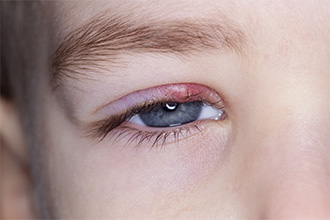If your child regularly wakes up at night and crying in pain, they may have growing pains. A child in pain is usually a cause of worry to the parent, especially if there is no known cause for the pain. Although they can be quite painful, growing pains are pretty common and don’t have any long-term effects. Growing pains aren’t a sort of disease, and you probably won’t have to go to the physician for them. But they can hurt, a lot.
Read More: Arthritis in Children: Symptoms, Risks, Treatment and Remedies
Everything you Need to Know About Growing Pains in Toddlers
Firstly, what are growth pains?
Growth pains aren’t something to worry about, but they refer to the essentially harmless muscular pain that can affect children (between the ages of 2-5, and then 8-12). Some kids may continue to experience these growing pains into early adolescence or teenage years. The pain may be felt in the legs – often the calves, front of thighs or behind the knees – and often worsens in evening. There is no known cause.
The duration of the pain usually lasts between 10 and 30 minutes, although it might range from minutes to hours. The degree of pain felt can be mild or very severe.
Read More: 11 Early Flu Symptoms in Children
What are its symptoms?
Growing pains are described as an intense, cramp-like pain in both legs. They are most often felt in the calves, shins or ankles, but can also affect the thighs. The pains develop in the evening or at night (often) after activity-intense days, but shouldn’t be present in the morning.
Your child’s ability to move around shouldn’t be affected by the growing pains and there should be no signs of limping, physical injury or infection.
How do I diagnose my child?
Often a doctor can diagnose this by examining your child’s medical history, examining your child and determine this during a physical exam. But usually, one does not need to go to a doctor to diagnose growing pains.
Read More: Scurvy in Children: Symptoms, Causes and Treatment
How do I help my child?
- Growing pains can usually be treated at home. You can try massaging your child’s leg muscles and joints or applying warm heat packs to their legs. Good supportive footwear such as sneakers might help prevent growing pains.
- You can also give your child a paracetamol or ibuprofen to manage the pain. Sometimes, giving them painkillers before bedtime after an active day can prevent them waking in the night. Avoid giving your child aspirin, especially if they are under 16.
- Reassuring your child will help them too. If your child has feet that roll in or if they trip a lot (mainly due to flat feet), ask a podiatrist to check their legs and posture and recommend some corrective measures. It also helps to not tell the child that the pain is associated with playing or growing, or else the child may feel afraid of both.
- For children who experience very frequent episodes – especially children who awaken at night – a dose in the evening of a long-acting pain medication like naproxen may decrease the severity of the pain. Patients with flat feet would benefit from a shoe insert to increase the arch on the inner side of the foot.
What are some causes of growing pains?
Although the causes are largely unclear, muscle growth is considered to be a major cause. Bone growth and growth spurts are often mistakenly considered to be the causes. Some children have growing pains that come and go for many years, but usually they go by mid-adolescence. Some children have more pain after they have been doing a lot of running and playing, but not all children experience this pattern.
The pain may also be due to the following:
- Muscular tiredness – intense physical activity can be linked to aching muscles for some children, although all children have some days when they do a lot more things than other days.
- Poor posture – standing, sitting or walking awkwardly puts a greater than usual strain on the muscles of the body. Sometimes, children whose feet roll in while they walk (with flat feet) may feel more trouble with the growing pains than other children.
How common are growing pains?
Growing pains are extremely common in preschool and school children. They’re more common in girls than in boys. Running, climbing, jumping or any intense physical activity might increase the risk of growing pains at night.
In conclusion, growing pains are not something to be overly concerned about, just be present for your child during these episodes and provide support and comfort. If the matter worsens over time, please consult your physician.
Sources
https://www.medicalnewstoday.com/articles/322617.php
https://www.webmd.com/children/guide/growing-pains#1
https://www.betterhealth.vic.gov.au/health/HealthyLiving/growing-pains













